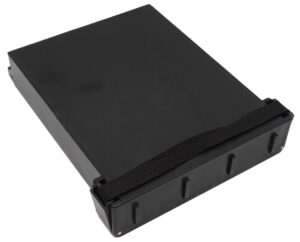We all know that battery technology has come on leaps and bounds in the past decade or so but there are a few strange myths out there on how best to look after your wheelchair battery.
It is essential to take proper care of the wheelchair batteries to prevent them from becoming damaged by misuse. So that you prolong its life and get the maximum charge each time we have made a list of the five top tips.
Mobility scooters and electric wheelchairs use what are known as long-lasting cycle batteries. They are designed to release energy uniformly over a long period of time to power the scooter of powerchair for as far as possible.
Most electric wheelchair and scooter batteries are maintenance free. Unless of course they are very old, in which case they probably don't work any longer.
These maintenance free batteries make use of a technology that uses an electrolyte transport method commonly called "gel". This 'gel' is sealed inside the outer shell of the battery so as to prevent leaks. As it is a sealed unit there is nothing to be done other than regular recharging.
An advantage of these sealed, maintenance free units used in electric wheelchairs, is that they can be transported without worry and even on an airplane if they are IATA approved. (please note that not all are, so check first if you intend to fly with your powerchair).

5 top tips for wheelchair battery care
1 Daily recharge
Even if you have not used the wheelchair you should recharge its battery(s) on a daily basis. This helps it to maintain full power throughout its life.
2 Charge fully every time
Do not interrupt the charging cycle, leave the battery or batteries charging until the fully charged indicator is lit up. I find that this is best done at night, so you wake up to a fully charged battery.
3 Leave the battery in the charge
If you know that you will not use your electric wheelchair for the day then leave the batter in the charger and flick it on when you retire to bed. Contrary to some myths, this doesn't discharge nor damage the battery.
4 Disconnect for long periods
If you are going away and don't plan to use the powerchair for a couple of weeks or more then it is wise to disconnect the cable that connects both batteries. If your powerchair has a single battery only this is not necessary. On return, make sure that you plug them back together and fully charge them as above.
5 Manually check
It is good practice to inspect the batteries every other week or so and look for any damage to the casing, lid or base of the battery. As they are sealed units, you cannot spill the contents so it is safe to invert them for inspection.
Also, be sure to check the battery terminals for any signs of corrosion. This is not uncommon and can easily be rectified. If you find any signs of rust type corrosion then you simply need to clean the terminals with a wire brush and then apply some grease to help prevent this from re-occurring.
If you follow the above steps then you are likely to maximise the life of your electric wheelchair batteries. One or two further tips for general good practice include:
Avoid using extension leads when recharging your wheelchair battery. Always plug the charger in to the socket direct. This reduces the chance of overheating which can lead to fire.
Avoid trailing wires. If you can position your charger up off the ground and make sure that any power cables are not in the walk way then you can reduce the chance of tripping over the cable. A counter top with a plug socket is the best method i find then there are no trip hazards.
